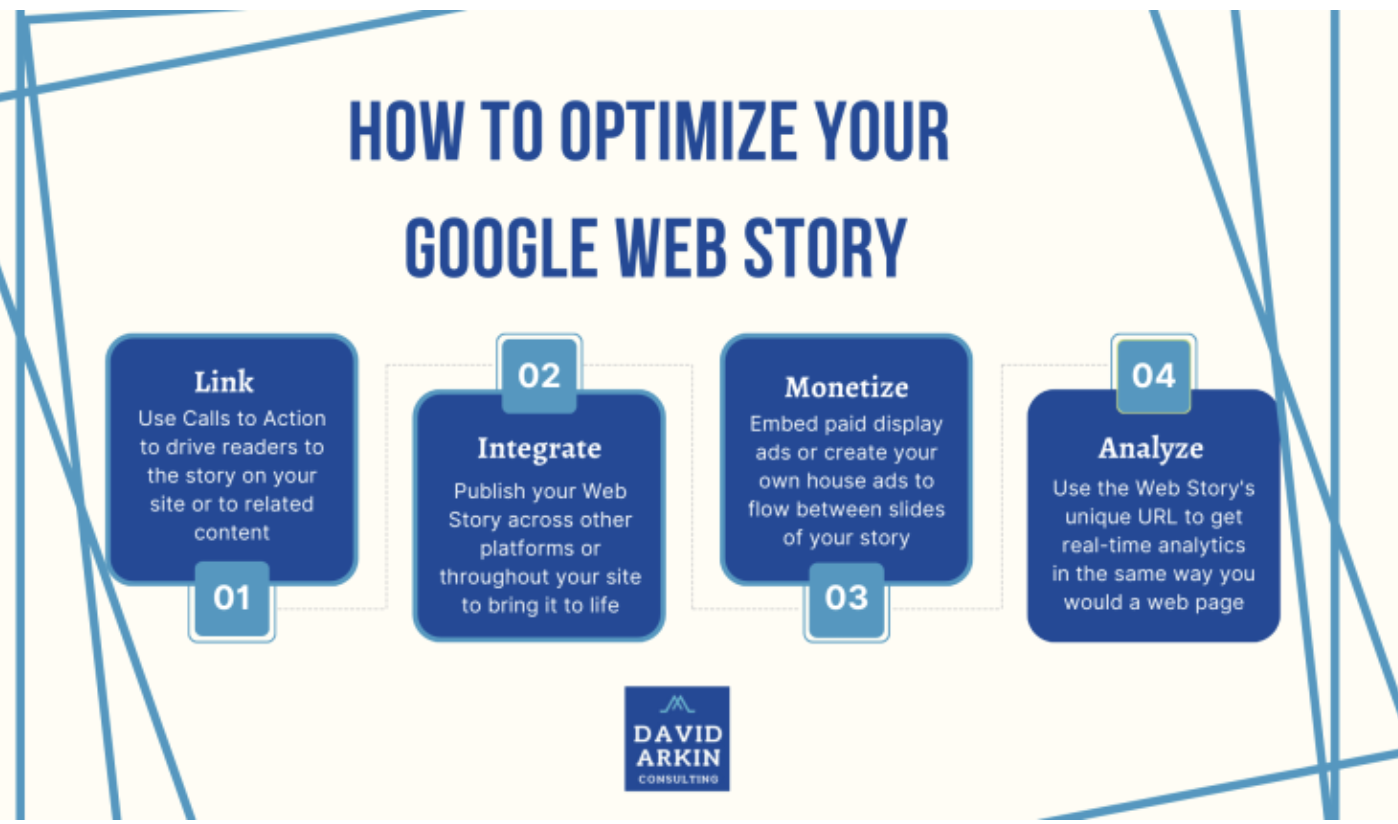
Similar to reels, Google Web Stories are visual storytelling tools specifically designed for mobile devices—only this tool is able to help boost your Google search traffic as well.
Google Web Stories are full-screen, swipeable formats that you are able to incorporate into your own content. Because they’re a web-based version of the popular story format, creators are able to host and own the content they are creating.
The platform comes with over 10 tools to make your story come alive, plus many templates you can use to guide the design of your story including video, audio, images, animation and text. It also offers interactive components including polls and quizzes to engage your audience even further.

How to make the most of your story
To optimize your Web Story, Google suggests making each story a minimum of four pages but less than 30 — so you can really tell a full story in this tool. The sweet spot is recommended to stay between 10 and 20 pages.
Google also recommends trying to incorporate as much video as possible to create an immersive experience and avoiding large blocks of text. Animations and other objects should be used thoughtfully to help make specific items stand out on each page.
Companies using the platform can also bring in their own personal styles or brand identities through the creation tools including their own logos, typography, color palette and more.
But by using the following strategies, you can extend your Web Story even further.
See an example of a Google Web Story that we created for a client here

Use Links: Similar to reels, embedded links (Calls to Action) can add just one more dimension to the story you’re telling with your Web Story.
Unlike reels, you can create a custom cover to lead off your Google Web Story. Instead of using the default first slide, the platform allows you to select a different cover photo to set up a true cover to the story you are telling.
Integrate Your Story: Once your story is created, that content becomes yours to share and distribute, which means you can use them to enhance your storytelling throughout the entire site.
Web stories are intended for mobile devices, but also are automatically formatted into a simple desktop viewer, so the content can be viewed by any online user. The platform even offers a preview tool that will show you what your story looks like across devices to ensure all users are getting the best experience.
There is a plugin for WordPress that you can integrate into your CMS to share the stories across the web and embed into existing content strategies.
Monetize with ads: Like web pages, Web Stories can be embedded with display ads, only through this platform, the ad becomes an immersive, full-screen experience. Google suggests that the easiest way to get a display ad to appear is to use an ad network as a go-between for story creators and advertisers. Google Ad Manager and Google AdSense currently support Web Stories, and can automatically integrate ads into your stories.
Creators can also create their own “house ads” or sponsored content by styling an individual page within the story to appear more like an ad.
Enjoy the traffic: Unlike most other reel platforms, Google Web Stories will automatically appear in relevant users’ Google surfaces like Search and Discover in the story carousel.
Because Web Stories serve as regular web pages with their own URL, they get their own place in Google search results and can be linked to your Google Analytics ID to provide real-time traffic updates.
Want to work with us to develop strategies to extend your digital audience and revenue? Email us at david@davidarkinconsulting.com.
We'd love to help your organization! Fill out the form below to get started.
Recent Posts

Here are 5 ideas your newsroom can use for Mother’s Day content

Here’s why you should be making LinkedIn a priority

Here are the best tips and metrics for branded content

Web traffic dropping? Use this SEO checklist

Best measles content and revenue ideas
Case Studies

How this unique coaching program taught a reporter the digital skills she needs for the future

How branded content sales exploded for this newspaper in New York

How a TV station in South Dakota significantly grew its traffic through Stacker’s news wire

How these changes helped this newspaper’s coverage of a limo trial skyrocket to the top of Google search result pages

